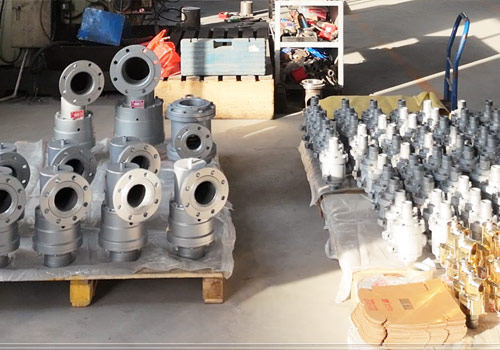Table of Contents
Introduction
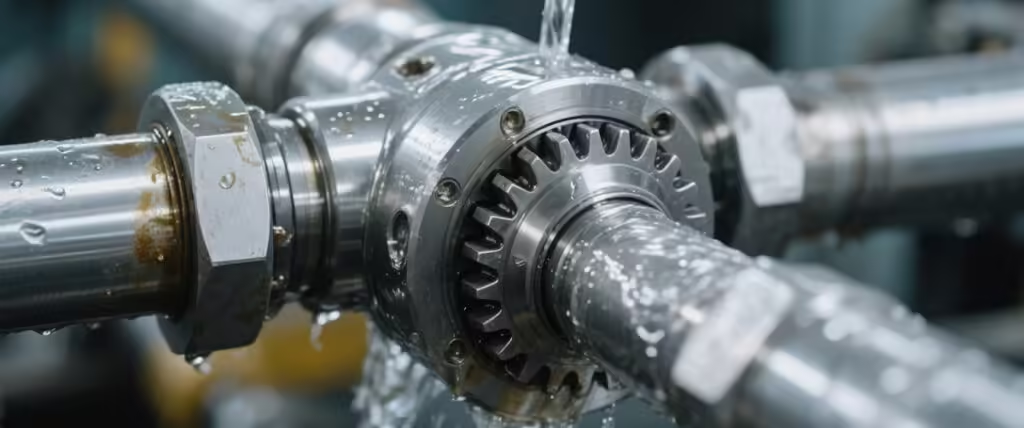
In the intricate world of industrial automation and machinery, the precise delivery of fluids to rotating components is a fundamental requirement. From cooling the high-speed spindles of CNC machines to heating the massive drying rolls of paper mills, the seamless, leak-free transfer of liquids, gases, and even vacuum is critical to operational efficiency, product quality, and safety. At the heart of this functionality is a specialized mechanical device, often referred to as a rotating union or swivel joint. The two terms are often used interchangeably, leading to confusion for engineers, designers, and procurement professionals.
While both swivels and rotating unions have the basic function of connecting a stationary fluid supply to a rotating device, within the industry, they sometimes have subtle differences in purpose, emphasis, or historical context. Understanding these nuances is more than just academic; it is essential to selecting the correct components to ensure optimal performance, avoid costly downtime, and extend the life of your machinery. Misidentified or improperly applied swivels can lead to significant operational inefficiencies or even catastrophic failures.
What Is a Rotary Joint?
At its core, a rotary joint is a mechanical device designed to allow the transfer of various media—such as water, steam, hydraulic fluid, air, coolant, or even vacuum—from a stationary source into or out of a rotating piece of machinery. Imagine a hose connected to a spinning drum; without a rotary joint, the hose would twist and break. This ingenious component maintains a sealed connection despite continuous rotation.
A typical rotating joint consists of a stationary housing (stator) and a rotating shaft (rotor or nipple). Between these two parts, a sophisticated sealing mechanism (often involving balanced mechanical seals made from durable materials like carbon graphite or silicon carbide) prevents leakage of the transferred medium. Bearings, which can be ball bearings, roller bearings, or simple bushings, support the rotating shaft and ensure smooth, low-friction operation. The design and materials of a rotary joint are precisely engineered to withstand specific operating parameters, including pressure, temperature, and rotational speed. The fundamental purpose of any rotary joint is to ensure uninterrupted fluid flow without leakage in a dynamic environment.
What Is a Rotary Union?
The term rotary union broadly refers to the same class of mechanical sealing devices that enable fluid transfer between stationary and rotating components. In many industrial contexts, “rotating union” and “rotary joint” are used completely interchangeably, referring to the exact same product. Manufacturers often list products under both terms to ensure they are discoverable by anyone seeking this type of device.
Historically, some might argue that the term rotating union emphasizes the “union” or connection aspect, highlighting its role in joining two distinct systems (a stationary pipe and a rotating machine) while maintaining a fluid path. This term is particularly prevalent in industries where various media types or multi-passage configurations are common, underscoring its versatility as a “union” for multiple fluid lines. Regardless of the chosen terminology, the core function of a rrotating union remains consistent with that of a rrotating joint: to provide a reliable, leak-free passage for fluids under rotation.
Are Rotary Joints and Rotary Unions the Same Thing?
In the vast majority of cases within the industrial fluid transfer landscape, yes, the terms rotating joint and rotating union refer to the exact same device. They describe a rotating sealing assembly that facilitates the passage of fluids from a static pipeline to a dynamic, rotating part of a machine. The slight differences in nomenclature often stem from historical usage in specific industries or regional preferences rather than fundamental differences in design or function.
Think of it like “automobile” and “car” – they generally refer to the same thing, though one might be more formal or used in particular contexts. Similarly, “swivel joint,” “rotating union,” or “rotating joint” are also frequently used synonyms. When you encounter either term from a reputable manufacturer or rotary joint supplier, you can generally assume they are describing the same type of fluid-transfer device designed for rotating applications. The key is to focus on the specific technical specifications rather than getting caught up in the naming conventions.
Key Structural Differences Between Rotary Joints and Rotating Union
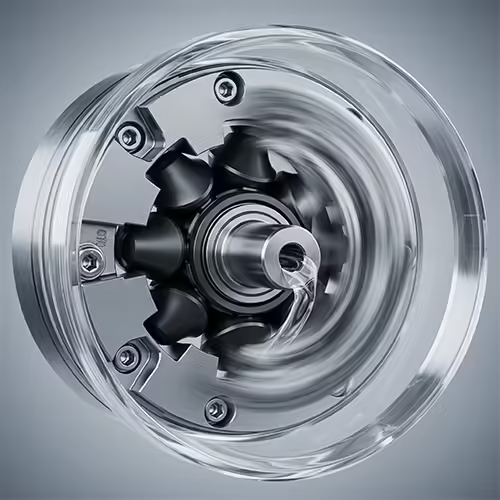
Given that the terms are largely interchangeable, any “structural differences” are more about specific designs within the broader category, rather than inherent differences between “rotary joints” and “rotating union” as distinct concepts. However, we can highlight structural variations found across different types of these devices, regardless of what they’re called.
- Bearing Systems: Some rotary joint designs feature precision ball bearings for high-speed applications, ensuring smooth rotation with minimal friction. Others might use more robust plain bearings or bushings for heavier loads or lower speeds, often in simpler designs.
- Sealing Mechanisms: The type of seal varies significantly. Balanced mechanical seals are common for high pressure and temperature, providing extended life by balancing pressure forces across the seal faces. Other designs might use lip seals, O-rings, or specialized packing for specific media or operating conditions.
- Number of Passages: A rotary joint can be single-passage (one fluid path) or multi-passage (multiple, isolated fluid paths). Multi-passage units are inherently more complex structurally, requiring intricate internal channeling and multiple sets of seals and bearings to prevent cross-contamination.
- Housing and Shaft Materials: The choice of materials for the housing and rotating shaft depends heavily on the media, temperature, and corrosion resistance requirements. Stainless steel, brass, and hardened alloys are common, with specialized coatings sometimes applied for enhanced durability or reduced friction.
- Mounting Configurations: While all rotary joint devices connect to stationary and rotating parts, the specific mounting can vary from threaded connections to flanged mounts or quick-disconnect designs, influencing the overall structural integration into a machine.
Application Comparison Across Industries
Both rotary joint and rotating union devices are ubiquitous across a vast range of industries, playing a vital role wherever fluid transfer to rotating machinery is required. Their specific applications often highlight the versatility and adaptability of these components.
- Paper & Pulp Industry: Here, these devices are essential for supplying steam to large drying cylinders and removing condensate. A specialized rotary joint designed for steam and condensate handling is critical for paper quality and efficient drying processes.
- Machine Tool Industry: In CNC machining centers, a rotary joint is used to deliver coolant through the spindle to the cutting tool, ensuring optimal temperature control and chip removal during high-speed operations. Hydraulic rotating union devices may also supply power for tool clamping.
- Plastics & Rubber Manufacturing: In plastic injection molding machines, a rotary joint facilitates the flow of cooling water to molds, while in rubber calendaring, they deliver heating fluid to rolls to maintain material viscosity.
- Food & Beverage: Sanitary rotary joint designs are crucial for transferring cleaning-in-place (CIP) fluids, steam, or cooling water to rotating mixers, cooking vessels, or filling machines, ensuring hygiene and temperature control.
- Oil & Gas and Chemical Processing: Robust rotary joint units handle the transfer of hydraulic fluids, process chemicals, or drilling muds under extreme pressures and often in corrosive environments.
- Textile Industry: A rotary joint is often employed in rotating drying cylinders or dyeing machines, managing the flow of steam or other processing fluids.
The suitability of a specific rotary joint design is dictated by the precise needs of each application, emphasizing the importance of detailed specification rather than just generic terminology.
Media Compatibility: Air, Water, Oil, and Steam
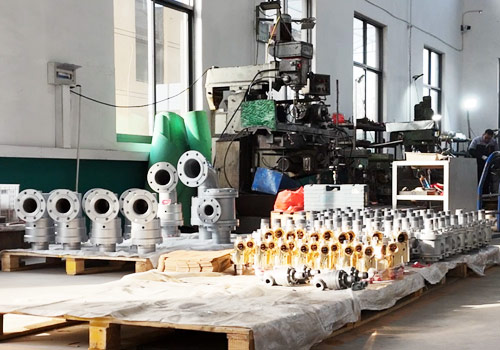
The versatility of a rotary joint is largely defined by its ability to handle a wide range of media while maintaining a leak-free seal. The selection of materials for seals, bearings, and the housing is paramount for ensuring media compatibility.
- Air and Gases: For compressed air or inert gases, rotary joint units typically feature lightweight designs with low-friction seals, often made from engineered plastics or specific carbon grades. Pressure ratings for air applications can vary widely.
- Water (Coolant/Hydraulic): Water is a common medium for cooling processes. Rotary joint devices for water require corrosion-resistant materials (e.g., stainless steel, brass) and seals that can withstand varying water quality and temperature. For hydraulic water, higher pressure ratings are necessary.
- Oil (Hydraulic/Thermal): Hydraulic oil demands rotary joint units with high-pressure capabilities and seals compatible with various oil types. Thermal oil applications (hot oil rotary joint) require materials that can withstand extremely high temperatures without degrading or causing carbonization, often employing specialized mechanical seal faces.
- Steam: Steam applications are particularly challenging due to high temperatures, pressure, and the abrasive nature of condensate. A rotary joint designed for steam typically features robust construction, high-temperature resistant mechanical seals (like carbon graphite to silicon carbide), and often incorporates self-supporting designs.
The ability of a single rotary joint to handle multiple media, sometimes even simultaneously in multi-passage configurations, makes them invaluable in complex industrial systems.
Pressure and Speed Capabilities
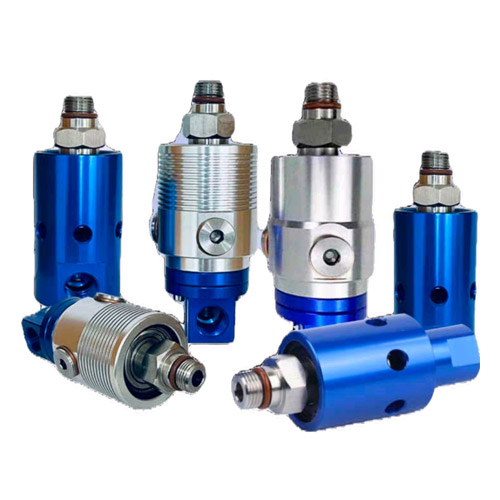
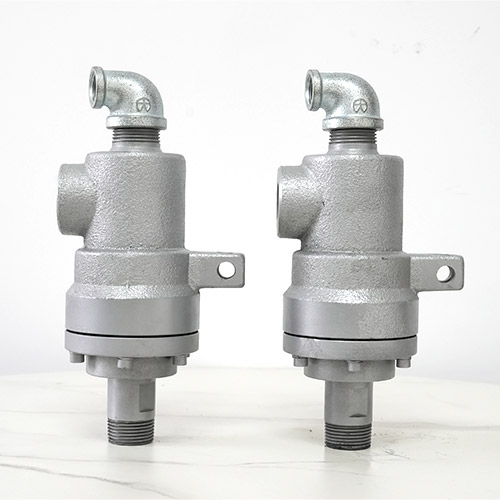
The performance envelope of a rotary joint is critically defined by its maximum pressure and speed capabilities. These two parameters are often inversely related; a rotary joint designed for extremely high speeds may have a lower pressure rating, and vice versa.
- Pressure: Rotary joint units are available for pressures ranging from vacuum to several thousand PSI (pounds per square inch). High-pressure rotating joint models typically feature more robust housing, reinforced shafts, and specialized balanced mechanical seals that can withstand the immense forces exerted by the fluid. Proper pressure rating is crucial for preventing blowouts and leaks.
- Speed (RPM): Rotational speed (Revolutions Per Minute) is another vital factor. Low-speed rotating joint units might use simpler bearings and seals, while high-speed applications (e.g., machine tool spindles) demand precision ball bearings, optimized seal designs with low friction, and often lighter materials to minimize centrifugal forces and heat generation. Managing heat build-up at high speeds is critical for the longevity of the rotary joint.
Understanding the interplay between these two parameters is key to selecting a rotary joint that will perform reliably without premature wear or failure. Pushing a rotary joint beyond its rated pressure or speed limits will drastically shorten its lifespan and could lead to hazardous conditions.
Installation and Maintenance Considerations
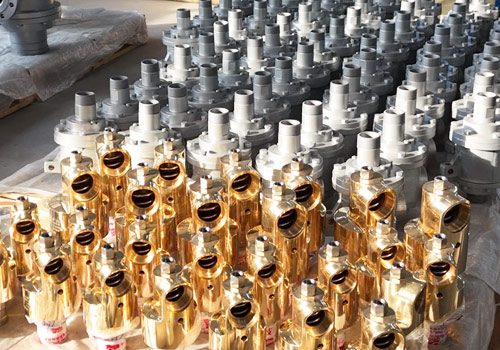
Proper installation and diligent maintenance are crucial for maximizing the lifespan and performance of any rotating joint. Despite the robust nature of these devices, neglecting these aspects can lead to premature failure.
- Installation: Correct alignment is paramount. Misalignment between the stationary piping and the rotating equipment can put undue stress on the bearings and seals of the rotary joint, leading to accelerated wear. Using flexible hoses for piping connections to the rotary joint is highly recommended to absorb minor misalignments and vibrations, reducing stress on the rotary joint itself. Following the manufacturer’s specific installation guidelines for torque, mounting, and lubrication is non-negotiable.
- Maintenance: While many modern rotary joint designs are engineered for minimal maintenance, regular visual inspections are vital. Look for signs of leakage, unusual noise, or excessive heat. Monitoring the machine’s performance (e.g., consistent temperature or flow) can also indicate a failingrotating joint. Some rotary joint models may require periodic lubrication of bearings, while others have sealed-for-life bearings. Proactive replacement of wear components, like seals, before catastrophic failure can significantly reduce downtime.
Which Is More Suitable for Multi-Passage Requirements?
When a rotating machine requires the simultaneous transfer of multiple distinct fluids (e.g., air, coolant, and hydraulic oil, all at different pressures or temperatures), a multi-passage rotary joint (or multi-passage rotating union) is the solution. Both terms are used interchangeably for these complex units.
The suitability comes down to the manufacturer’s design expertise rather than an inherent difference in the “joint” vs. “union” terminology. A multi-passage rotating joint is structurally more complex, featuring multiple concentric fluid passages, each with its own sealing mechanism, isolated from the others. These designs demand exceptional precision to prevent cross-contamination between media and to ensure leak-free operation for each individual circuit. While they offer incredible versatility and simplify machine design by consolidating multiple fluid lines into one compact unit, they typically have lower speed and pressure ratings per passage compared to single-passage rotary joints of comparable size due to the increased internal complexity and friction.
Choosing the Right One for Your Application
Selecting the correct rotary joint (or rotating union) for your specific application is a critical decision that impacts performance, safety, and operational costs. Here’s a structured approach to making the best choice:
- Identify the Media: What fluid(s) or gas(es) will be transferred? (e.g., water, steam, hydraulic oil, air, vacuum, chemicals). This dictates material compatibility.
- Determine Operating Parameters:
- Pressure: Maximum operating pressure (PSI/bar).
- Temperature: Maximum operating temperature (°C/°F).
- Speed: Maximum rotational speed (RPM).
- Flow Rate: Required volume of fluid transfer.
- Understand Application Requirements:
- Number of Passages: Single or multi-passage?
- Rotation Direction: Unidirectional or bidirectional?
- Mounting: How will it connect (threaded, flange, quick-disconnect)?
- Environment: Corrosive, dusty, cleanroom?
- Vibration/Misalignment: Is the rotary joint expected to absorb significant vibration or misalignment?
- Consider Lifespan and Maintenance: What are the expected service life and maintenance intervals? Are replaceable seals or bearings a priority?
- Consult a Reputable Manufacturer/Supplier: Provide your detailed specifications to a knowledgeable rotary joint manufacturer. Their expertise is invaluable in recommending the optimal rotary joint model and configuration for your unique needs.
By carefully considering these factors, you can ensure that the rotating joint you select is perfectly suited for its intended purpose, delivering reliable and efficient performance.
Conclusion
In the realm of industrial fluid transfer, the terms rotary joint and rotating union are, for all practical purposes, interchangeable. Both refer to the ingenious devices that enable seamless fluid communication between stationary and rotating machinery, a function critical to countless manufacturing processes worldwide. While the terminology may vary by industry or region, the core principles of design, operation, and application remain consistent. The real distinction lies not in the name, but in the specific technical capabilities—such as pressure and speed ratings, media compatibility, structural design (e.g., multi-passage), and material choices—that make a particular rotating joint suitable for a given application.
Understanding these characteristics and meticulously matching them to your operational requirements is paramount for maximizing efficiency, ensuring safety, and extending the lifespan of your equipment. A high-quality rotary joint is an investment in reliability and continuous performance.
At Modern Sealing, we are a leading manufacturer of high-performance rotating joint solutions, leveraging extensive experience and patented technologies to deliver exceptional dynamic and static sealing devices. We understand the nuances of every application. If you need a reliable rotating joint or require expert guidance in selecting the perfect fluid transfer solution for your rotating machinery, contact us today. Let our specialists help you find the ideal rotary joint to keep your operations running smoothly and efficiently.
FAQ
What is the fundamental purpose of a rotary joint/rotary union?
The fundamental purpose of a rotary joint (or rotating union) is to enable the transfer of fluids (liquids, gases, vacuum) from a stationary source to a rotating component or vice versa, while maintaining a sealed connection to prevent leakage.
Are rotary joints and rotary unions always self-supporting?
Not always. While many rotating joint designs are self-supporting, others require external support to manage weight, vibration, or misalignment, especially larger or more complex rotary joint units. Always check the manufacturer’s specifications for installation requirements.
Can a single rotary joint handle multiple types of fluid simultaneously?
Yes, a multi-passage rotating joint (or multi-passage rotating union) is specifically designed to handle several different types of fluids or separate fluid lines simultaneously through independent internal channels, preventing cross-contamination.
What are the main components of a rotary joint?
The main components of a rotating joint typically include a stationary housing, a rotating shaft (or nipple), bearings (which support rotation), and dynamic seals (which prevent fluid leakage). Other components might include siphon tubes, springs, and end connectors.
How do I ensure I select the correct rotary joint for my application?
To select the correct rotary joint, you must accurately define your application’s requirements: the type of media, maximum operating pressure, temperature, and speed, as well as the number of passages needed. Consulting with a specialized rotating joint manufacturer or supplier is highly recommended.

